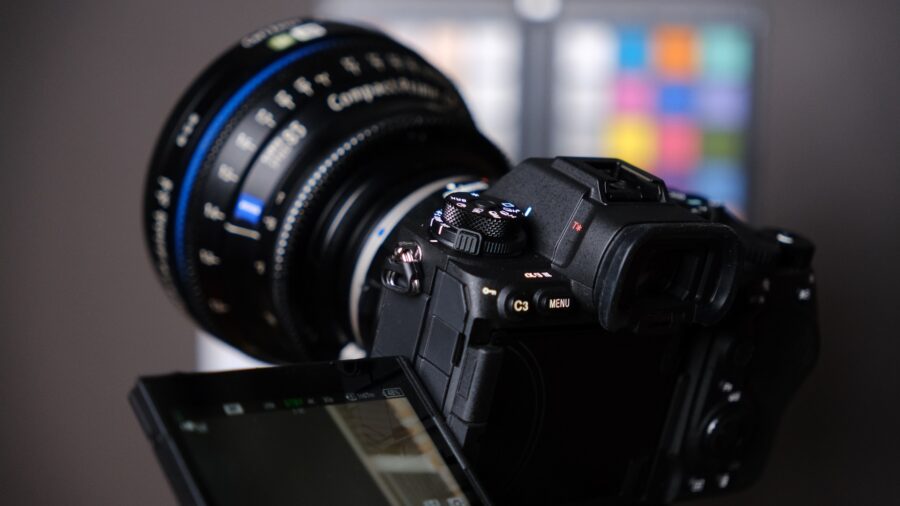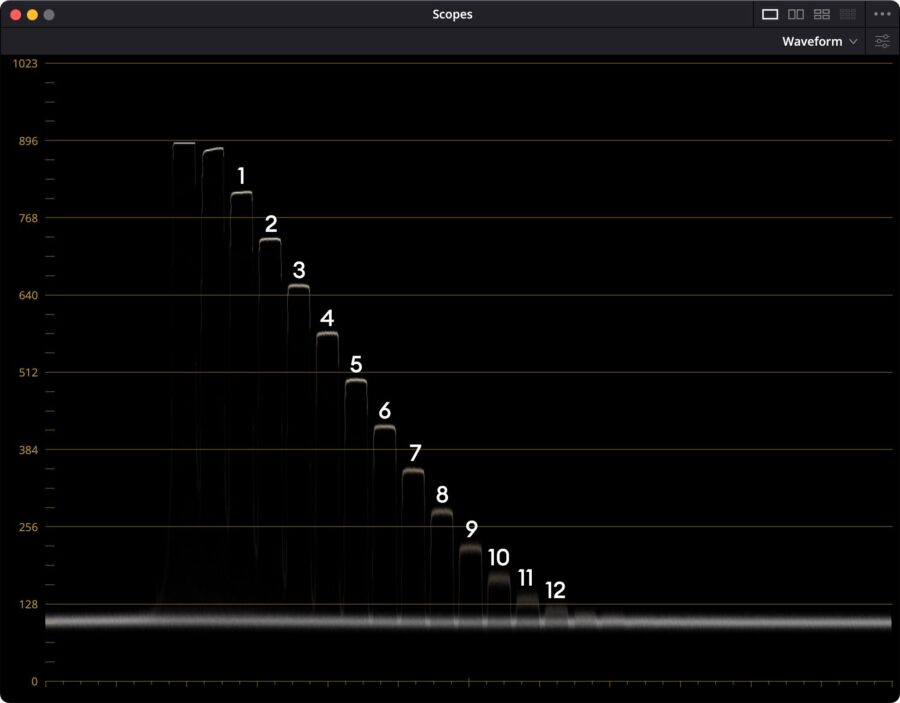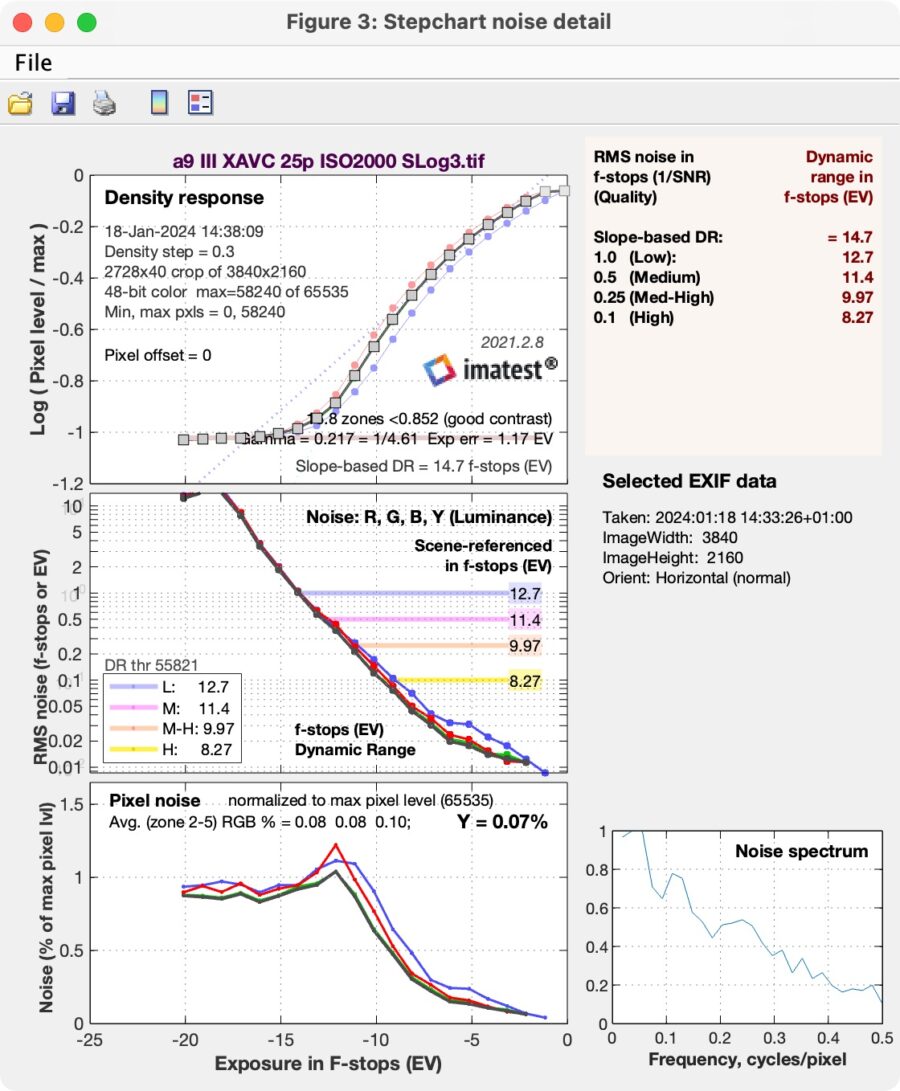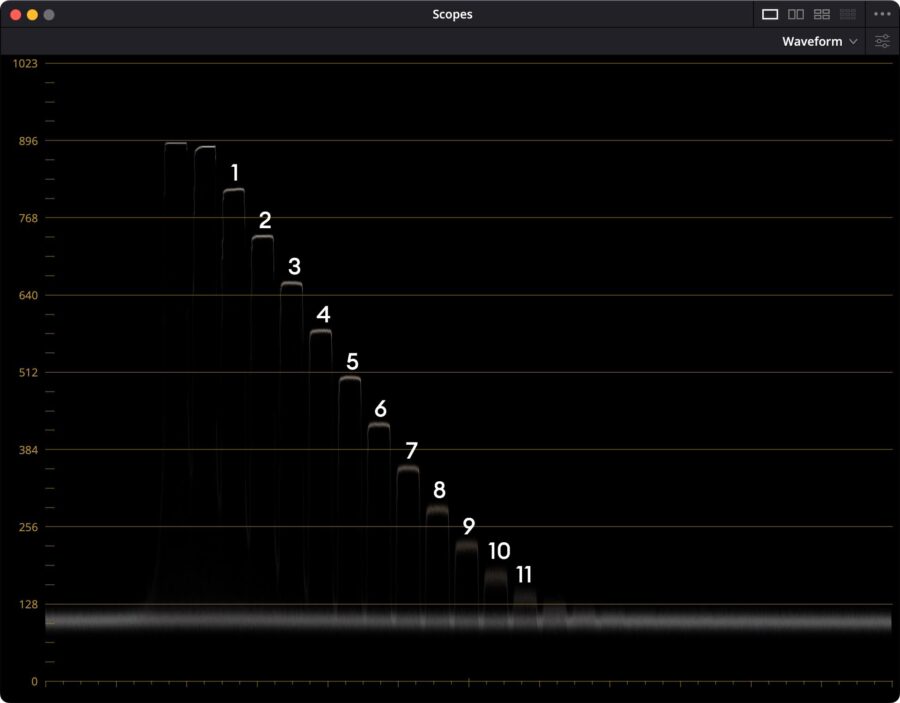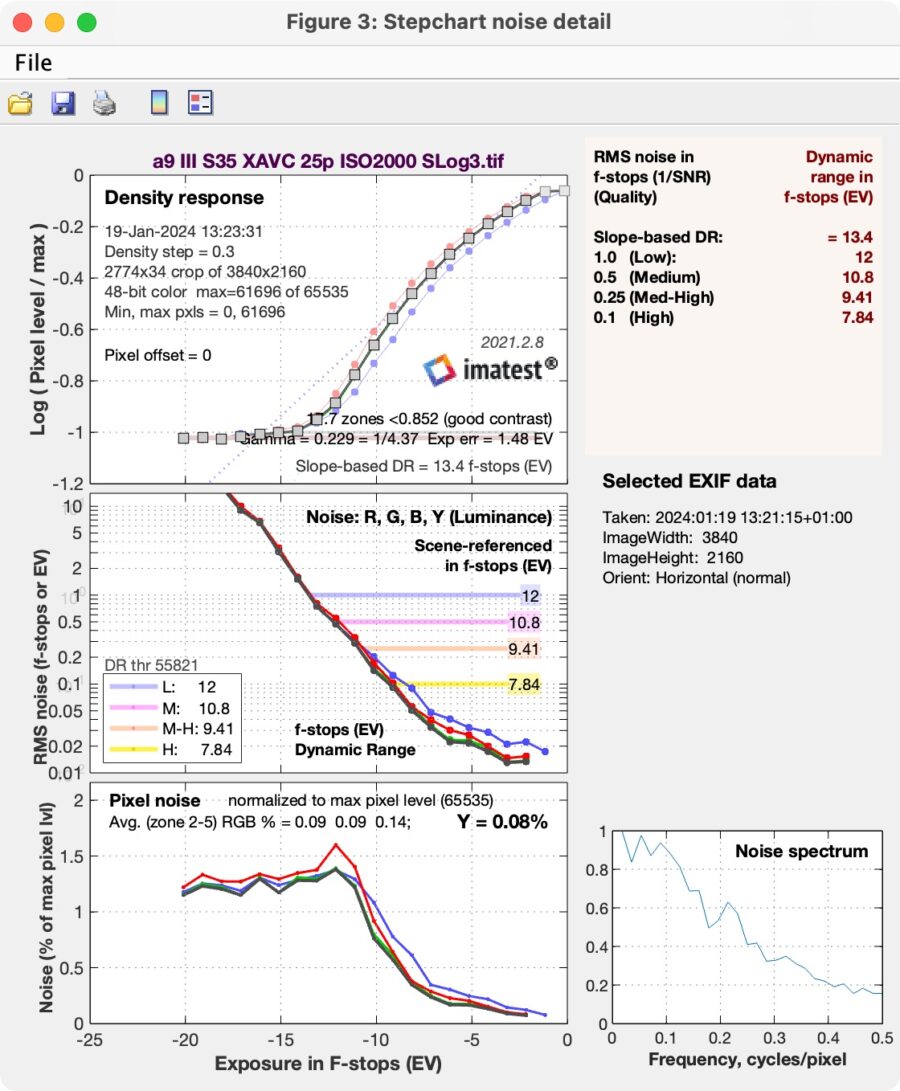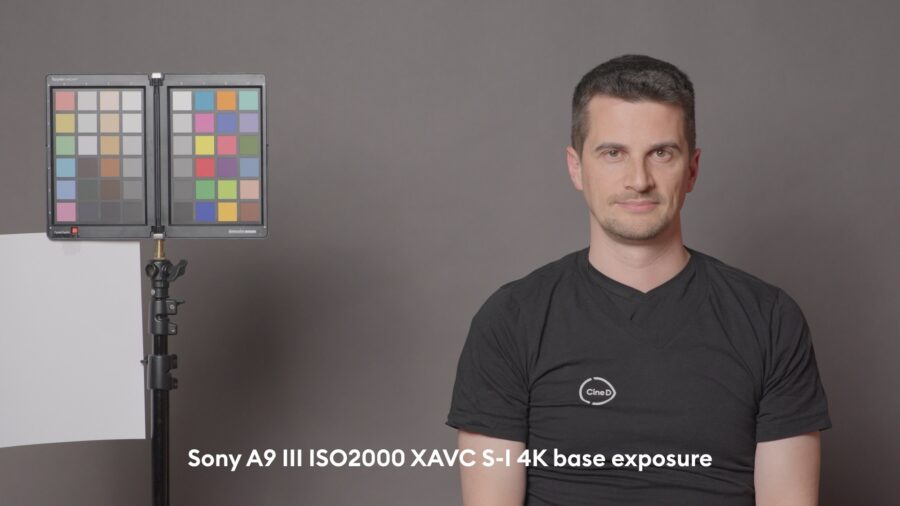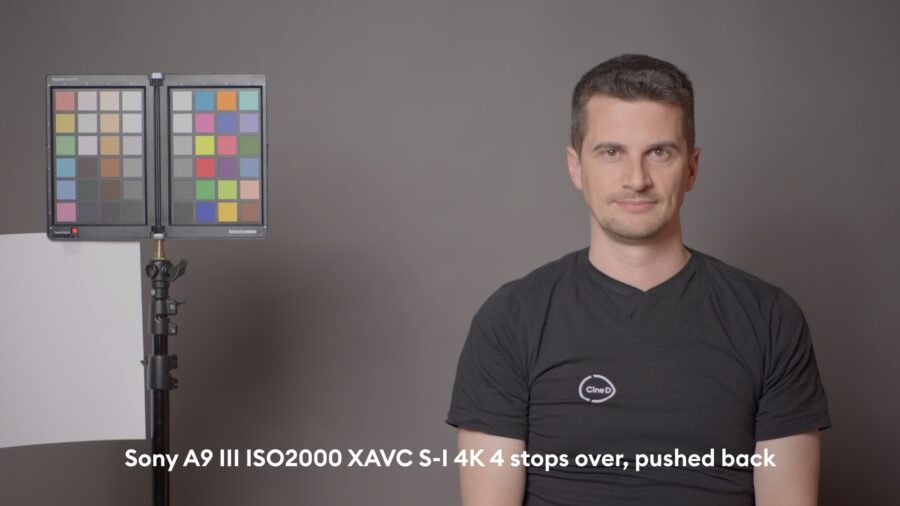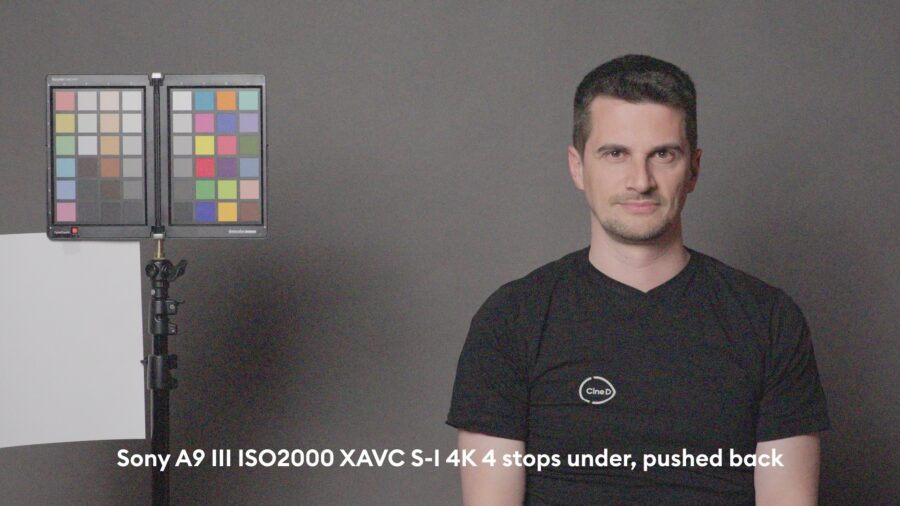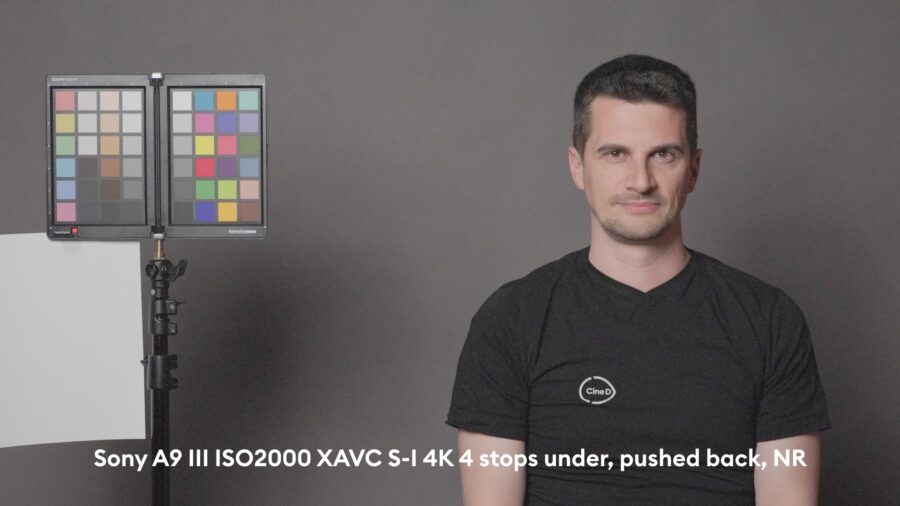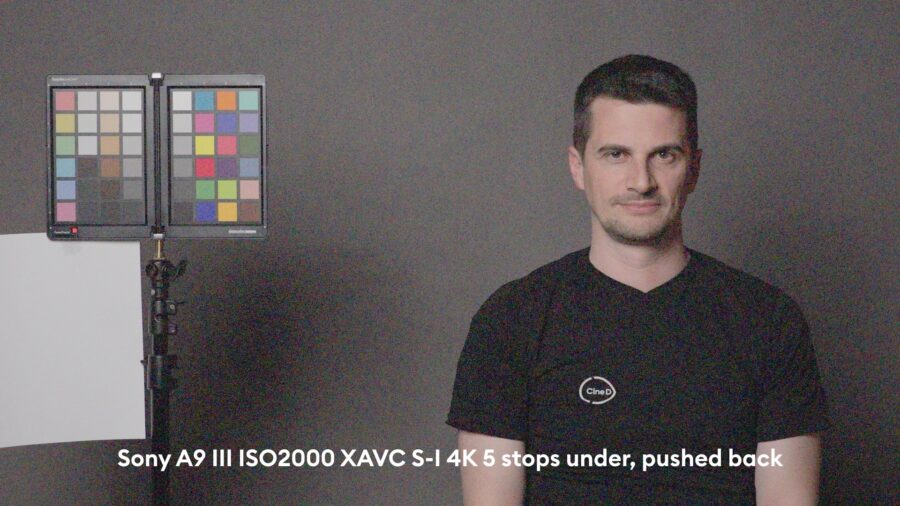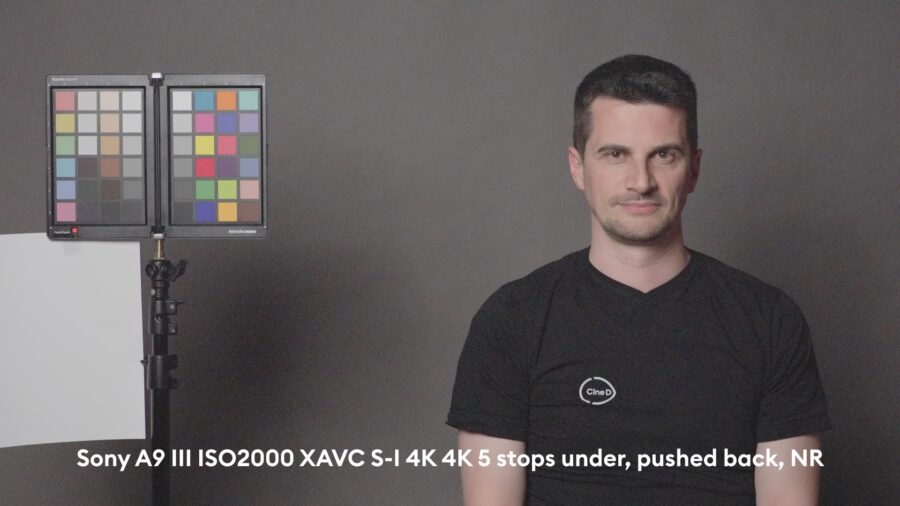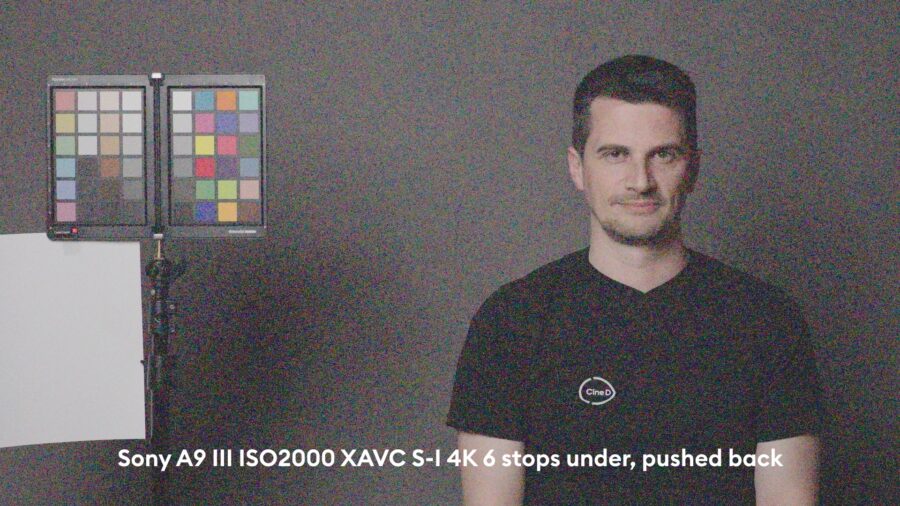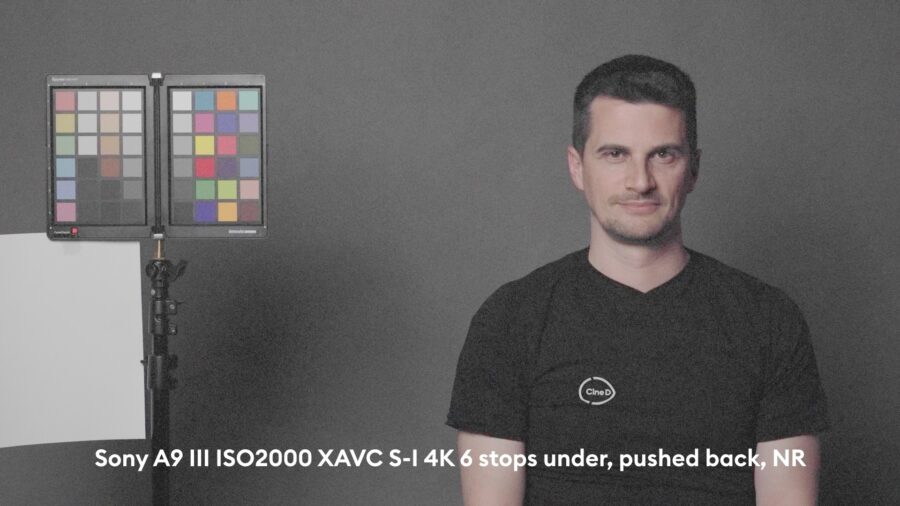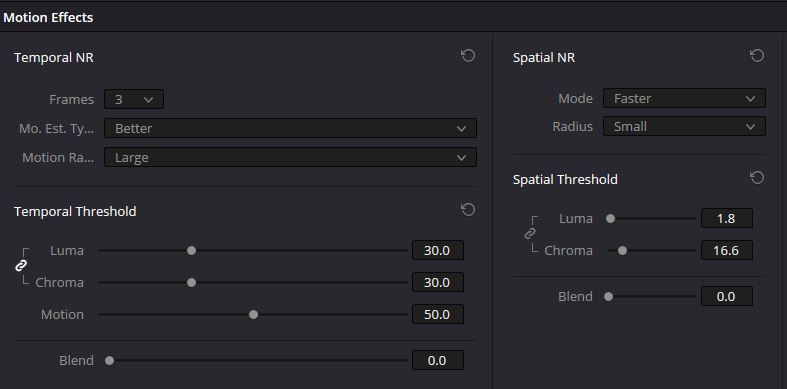Sony has introduced a full frame 6K global shutter sensor in their recent a9 III. Please head over to our article here covering the specs and what is new in terms of body and ergonomics. In essence, it provides 4K video oversampled from 6K in full frame or Super 35 mode for frame rates of 24 – 120 frames per second without any crop.
So, without further ado let’s jump right into the results. Again, my dear colleague Florian Milz helped to shoot this test and also provided the IMATEST analytics – thank you, Florian!
For obvious reasons there is no rolling shutter section for this global shutter camera, so next up is dynamic range measurement using our Xyla21 chart (see our article here on how we test dynamic range).
Dynamic range of the Sony a9 III at ISO2000
The first thing to notice when firing up the Sony a9 III is that the base or “native” ISO of S-Log3 is now 2000 instead of 800 like on so many other Sony cameras. Fine, so here is the waveform result shooting our Xyla21 chart in S-Gamut3.Cine / S-Log3 using full frame 4K XAVC S-I at ISO2000:
A solid 12 stops can be seen above the noise floor; even a 13th and 14th stop are visible. IMATEST calculates 11.4 stops at a signal-to-noise ratio of 2 (SNR) and 12.7 stops at SNR = 1. At first sight, this looks like more than 1 full stop less than e.g. the Sony a7 IV camera that we tested here.
But, something interesting is visible in the middle graph above the blue “12.7” line: there are another 3 stops exhibited inside the noise floor which could potentially be “excavated” using noise reduction in post. All other Sony Alpha cameras that we tested so far had a lot of internal noise reduction (that cannot be turned off) already baked into the image, hence leading to seemingly better IMATEST results, but also failing to show any potential to reveal additional stops from the noise floor.
The Sony a9 III seems to be different here. It looks noisier, but the noise looks finely dispersed, hence if the image pipeline including codecs is capable of encoding this fine image grain we will be able to pull stops from the shadows using post-noise reduction.
Also, the dynamic range stays the same for 60 frames per second and 120 fps. Quite remarkable.
In 4K Super 35 mode, there is no oversampling from 6K hence the image is a bit noisier, reflected in the waveform and IMATEST results below:
The dynamic range drops to 10.8 stops at SNR = 2 and 12 stops at SNR = 1.
Exposure latitude of the Sony a9 III
As stated in earlier articles, latitude is the capability of a camera to retain details and colors when over- or underexposed and pushed back to a base exposure. This test is very revealing, as it pushes the complete image pipeline of any camera to its absolute limits – not just in the highlights but mostly in the shadows.
Our studio base exposure is (arbitrarily) chosen as having an (ungraded) luma value of around 60% on the forehead of our subject on the waveform monitor – in this case, my colleague Nino:
Again, we shot S-Gamut3.Cine / S-Log3 using full frame 4K XAVC S-I at ISO2000. The LOG images were developed in DaVinci Resolve 18.6.4 using an input color space transform (CST) to DaVinci wide gamut/intermediate, then adjusted to base exposure and finally bringing it to Rec709 by another color space transform node at the end.
4 stops above base exposure we are at the cusp of starting to clip the red channel on Nino’s forehead, but the image brought back to base looks totally fine:
Now it gets interesting as we start to underexpose the image below our base exposure in 1-stop increments and push it back to base in post. At 3 stops under, the image starts to show a finely dispersed grain, which actually looks quite good to my eyes.
At 4 stops under, pushed back to base noise becomes very noticeable in the image:
Noise reduction can still provide a decent and very useable result:
The image looks really good, there are no horizontal lines and also no banding artifacts visible. We are already at 8 stops of exposure latitude, which is actually 1 stop better than the Sony a7S III or Sony a7 IV- wow, this is really good! So far, only the Sony A1 managed to provide 8 stops of exposure latitude.
Now, let’s see if we can push it 1 stop further – to 9 stops of latitude:
Luma and chroma noise is all over the place, but it is still finely dispersed – as opposed to other Sony alpha cameras, which typically start to show larger blotches of chroma noise that cannot be easily removed by noise reduction.
Noise reduction manages to clean up the image quite nicely:
Wow – this is still rather usable. We are at 9 stops of exposure latitude. The only cameras so far that managed to do this were the RED V-Raptor 8K VV (9 stops latitude), ARRI Alexa Mini LF (10 stops latitude), and Alexa 35 (12 stops). My criterion is always the shadow side of the face – have a look at how this area still cleans up OK-ish.
I think we have reached the limit now, as there are faint but visible larger blotches of pink chroma noise. But they are still not very distracting to the eye.
Now let’s try one more stop of underexposure by moving to 10 stops exposure latitude:
Atrocious noise is now all over the place. Let’s see what noise reduction can do:
Now, this is game over. The shadow side of Nino’s face cannot be recovered anymore, and the heavy noise reduction needed to clean this up already leads to ghosting that would not be acceptable in a moving image. It still looks surprisingly good though without banding or horizontal/vertical line artifacts!
In summary, this leads me to the superb result of 9 stops of exposure latitude with some wiggle room towards 10. This is the best result we found so far for a consumer full-frame camera (as mentioned above, the ARRI Alexa Mini LF exhibited 10 stops of exposure latitude, and the Alexa 35 12 stops).
Summary
The Sony Alpha 9 III displays fantastic results in our lab test. Rolling shutter by the very nature of the global shutter design is non-existent (effectively 0ms) – the best we have and will ever see for full-frame sensors. It cannot get better from here.
Dynamic range using our Xyla21 chart and IMATEST analysis is average when compared to other full-frame consumer cameras. But as is so often the case, IMATEST results are only one piece of the puzzle looking at the dynamic range of a camera. It basically gives a feel for how noisy images are at the various Xyla stops (patches). And here it can be clearly seen that the global shutter sensor is definitely noisier than its CMOS full-frame counterparts seen in other consumer full-frame cameras.
But Sony applied some magic to the image pipeline including the codecs, as the fine noise of the sensor is conserved in the final image and shadows can be massively pushed in post without ugly larger blotches of noise. This results in a superb 9 stops of exposure latitude with some room towards 10, making it the best Sony Alpha camera to date in video mode in terms of dynamic range! It is also the best consumer full-frame camera in that regard.

